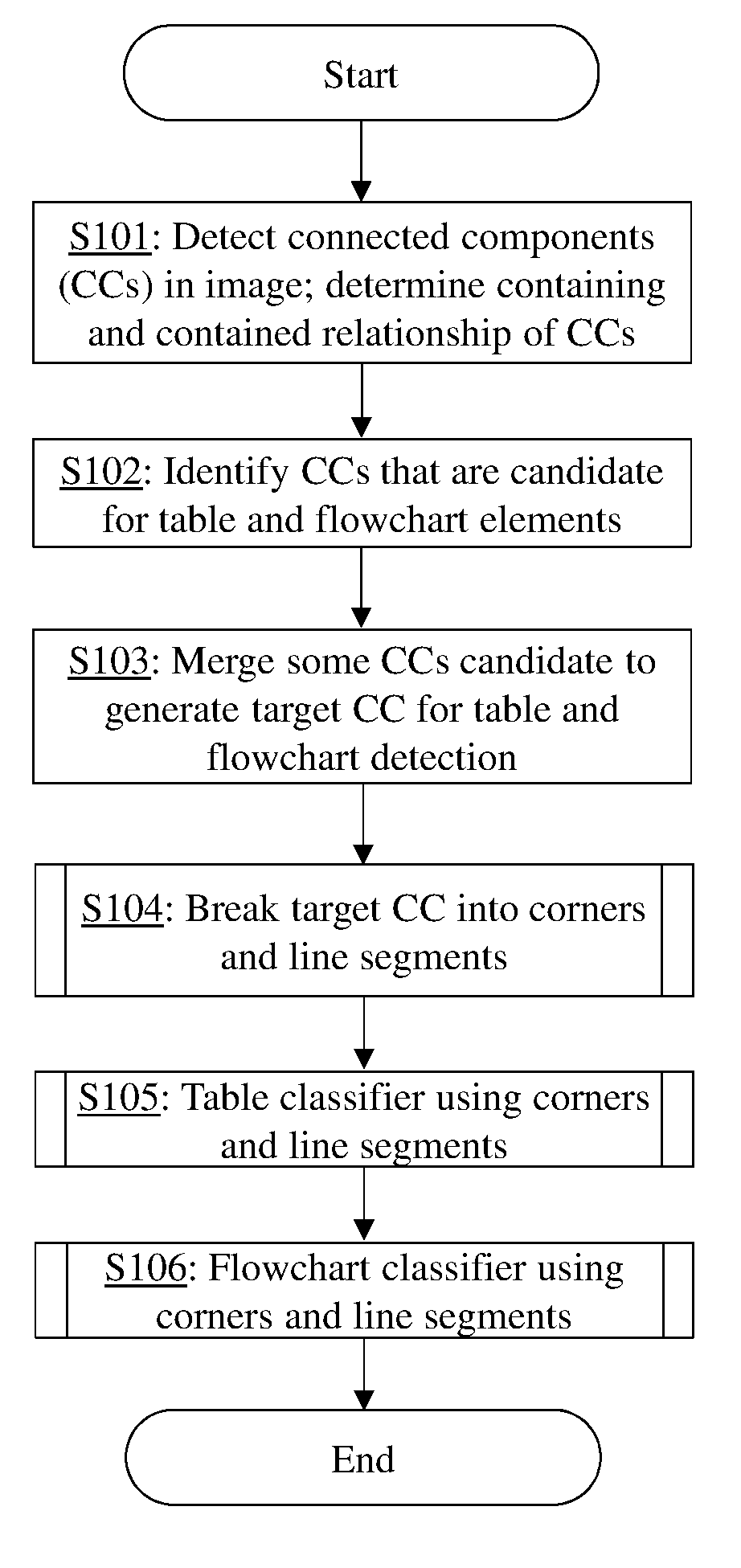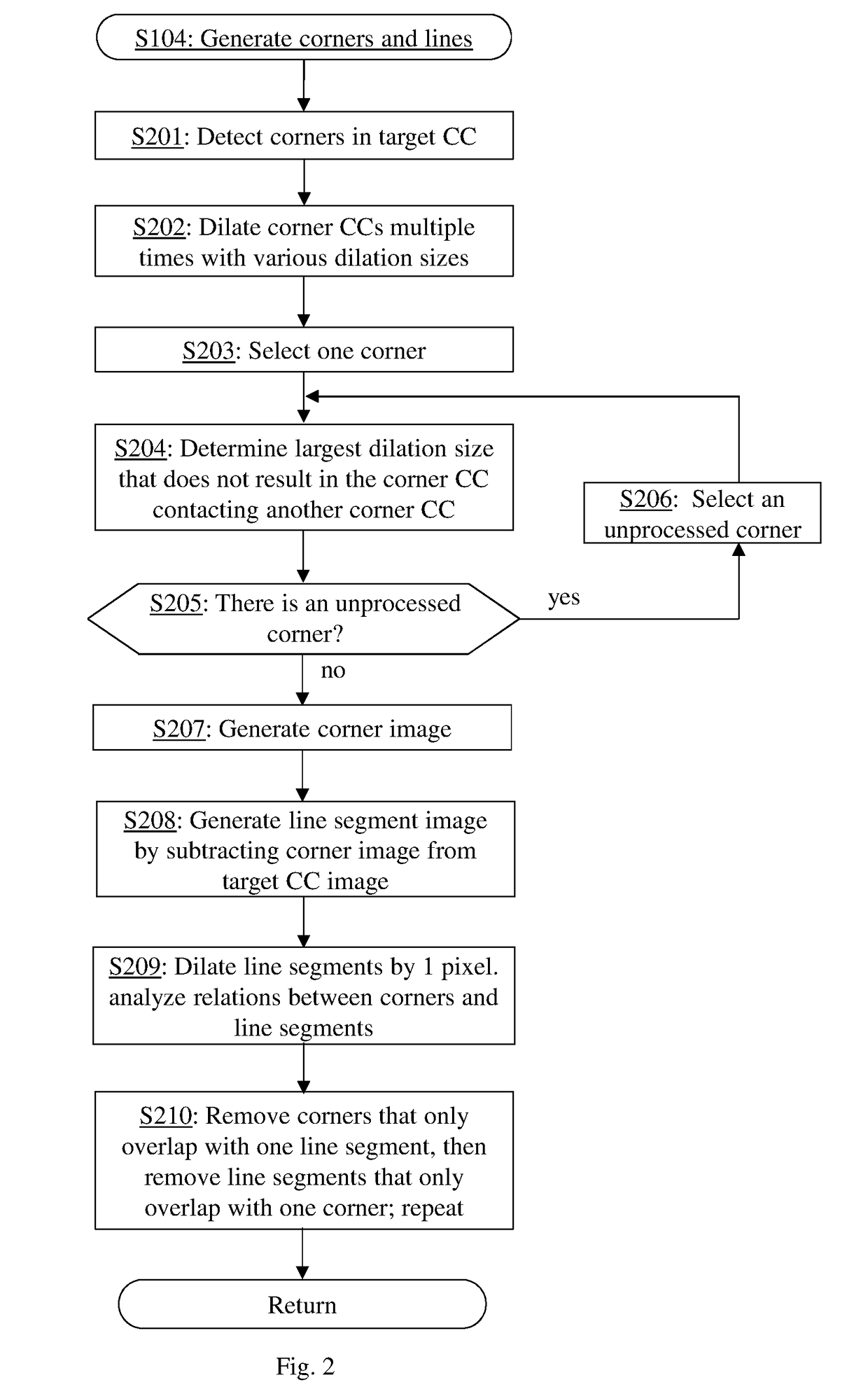Method for recognizing table and flowchart in document images
a document image and flowchart technology, applied in image analysis, image enhancement, instruments, etc., can solve problems such as unstable line detector based approach, object deformation, and difficulty in correctly recognizing different types of contents
- Summary
- Abstract
- Description
- Claims
- Application Information
AI Technical Summary
Benefits of technology
Problems solved by technology
Method used
Image
Examples
Embodiment Construction
[0015]Embodiments of the present invention provide a method for detecting tables in an input document image. The document image is a binary image where each pixel has a value of either black or white. Here, it is assumed that the document background is white and document content is black, although the method described below can be readily modified for white content on black background.
[0016]Generally stated, the table and flowchart detection method includes the following steps. First, based on a connected component analysis of the input image and the sizes of the connected components, a target connected component that corresponds to possible elements of table or flowchart (such as table lines, flowchart boxes and lines) is detected in the input image. Then, the target connected component is broken into corners and edges for analysis. In this step, the corners are detected in the connected component, and the edge lines are the parts of the connected component that are divided by the ...
PUM
 Login to View More
Login to View More Abstract
Description
Claims
Application Information
 Login to View More
Login to View More - R&D
- Intellectual Property
- Life Sciences
- Materials
- Tech Scout
- Unparalleled Data Quality
- Higher Quality Content
- 60% Fewer Hallucinations
Browse by: Latest US Patents, China's latest patents, Technical Efficacy Thesaurus, Application Domain, Technology Topic, Popular Technical Reports.
© 2025 PatSnap. All rights reserved.Legal|Privacy policy|Modern Slavery Act Transparency Statement|Sitemap|About US| Contact US: help@patsnap.com



